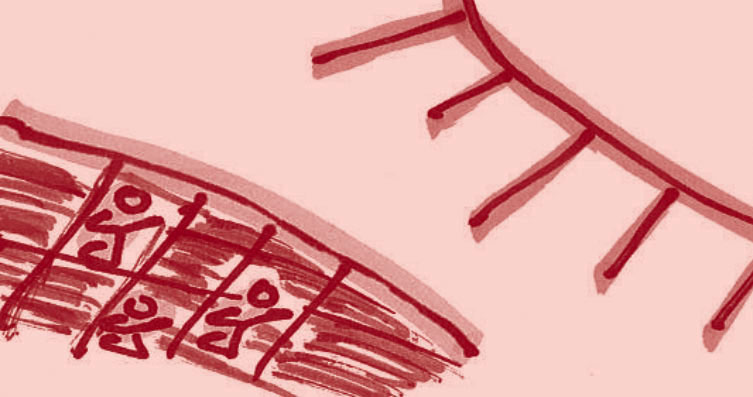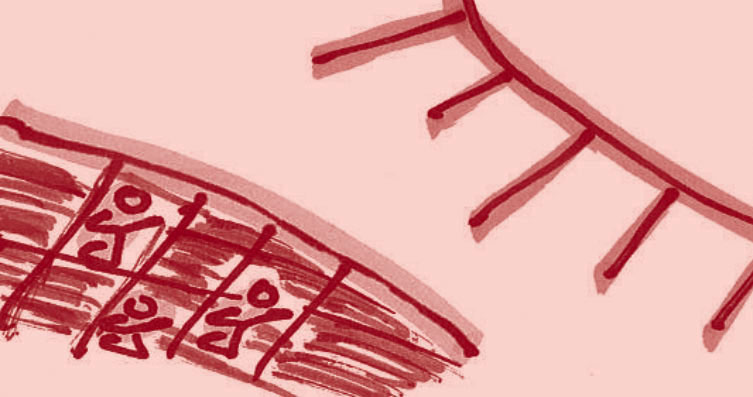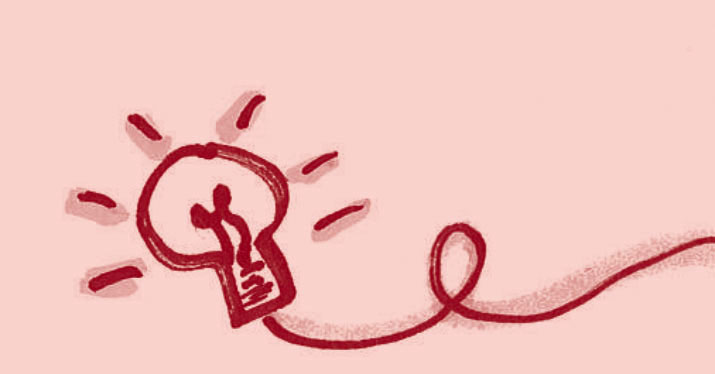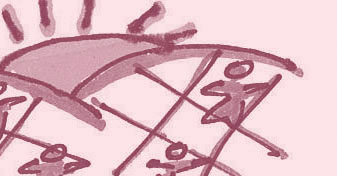Participatory Action Research Steps
Similar to popular education, participatory action research is a process of collective inquiry to reach a deeper understanding of the context and causes of a problem impacting a community. As with popular education, the ultimate goal of participatory action research is to inform actions to bring change in one’s community. Instead of being studied by outside expert researchers, a community or group of people control the research process themselves by determining what problem they want to study, the information they need to find, where they will find the answers, and ultimately, what they will do with the information uncovered. Participatory action research confronts the elite monopoly on research and information about poor, marginalized and often-over-studied people by proposing a process of generating collective knowledge, of the people for the people, to change a specific social condition impacting the most marginalized members of society (Fals-Borda, 1998; Fine, 2001).
Research Steps
I. Problem Identification
o What are we concerned about?
o Define the context of the problem
II. Exploring and Defining the Topic
o What is happening?
o What makes the problem exist?
o Our own ideas (hypothesis) about the problem and ways
to promote change
III. Question Development
o What do we need to find out to address this problem?
IV. Planning
• Engage your learning group in the research planning
• Where are we going to find the information?
• Who do we need to talk to?
• What skills do we need?
• Learning group divides the work of interviewing
• Set a time line for completion
• Inform community of assessment effort
V. Research Tools
• Questionnaires, one-on-one meetings, on-site observation,
focus groups, etc.
• Documentation tools: notes, recording, photos
• Team conducts outreach interviews
VI. After the Interviews
• Learning group brings back information
• Is more information needed?
• What patters are emerging?
• Analyze the most relevant findings
• Write up findings
• How should the information be presented to community?
• How can we share what we learned through culture and art expression?
VII. Actions
• How can we use the information to develop strategies to take actions
towards addressing the problem/issue we studied?


Principles
• Collective study and mutual learning to build one’s own knowledge
• Cooperative study happens among the people
• Learning leads to ACTION: We don’t know if things work unless we take actions on things

Tips
• When developing the questions, keep the main question of your research in mind
• More questions are not better; it’s best to use fewer questions that are more relevant
• Develop a realistic timeline that works for the group; do not make the process too rigorous

References
• The Theory Behind Our Work Tool
• What is a Learning Group Tool
Where to Find Information on Participatory Action Research
The list provided in this tool was compiled by the fellows of the Tamejavi Cultural Organizing Fellowship Program
WHERE WE FIND INFORMATION
FOR OUR RESEARCH
To find information about our own culture and language (reclaiming, maintaining and enhancing), we have had positive results with the following resources:
• Our own communities (here and in our homeland)
• Elders
• Churches, temples, mosques
• Gatherings
• Religious books
• Books
• Internet
• Newspapers
• Community centers
• Organizations
• Cultural institutions
• Our families
• Celebrations
• Markets
• Schools
• Historians
To find information about involvement in public life and struggles, we have had positive results with the following resources:
• Local teachers
• Community members
• Local representatives
• Newspapers
• Meetings of coalitions, groups
• Colleges
• All the groups we already know (One by One)
• Observe forums
• Libraries


Principles
• People work collectively
(in groups), share experiences, and encourage participationThis only works if the same group of people go through the process of working with individuals interested in collective learning, engaging others and forming groups of people
• Collective study, mutual learning to build knowledgeThe ideas of cooperative study and mutual learning allows participants to develop their own knowledge and that of the group

Tips
• See list of tips indicated
in the tool

References
• The Theory Behind Our Work Tool
• Documentation Tool
Participatory Action Research Frequently Asked Questions
Similar to popular education, participatory action research is a process of collective inquiry to reach a deeper understanding of the context and causes of a problem impacting a community. As with popular education, the ultimate goal of participatory action research is to inform actions to bring change in one’s community. Instead of being studied by outside expert researchers, a community or group of people control the research process themselves by determining what problem they want to study, the information they need to find, where they will find the answers, and ultimately, what they will do with the information uncovered. Participatory action research confronts the elite monopoly on research and information about poor, marginalized and often-over-studied people by proposing a process of generating collective knowledge, of the people for the people, to change a specific social condition impacting the most marginalized members of society (Fals-Borda, 1998; Fine, 2001).
What is participatory action research?
• Participatory action research is the community engaging in a process to address their concerns. It involves looking for resources needed to begin the process and engaging community members who represent those that will benefit from it. Participants maintain control of the process with the guidance of outsiders.
What is the difference between “traditional” research
and participatory action research?
• Participatory action research is geared towards solving a social or economic problem of “disadvantaged” (for lack of a better word) people. Its goal is to engage “ordinary” people in the process of improving the lives of the “disadvantaged” group.
• Traditional research rests in the hands of academicians and professionals.
How do you distinguish between participatory action research
and popular education?
• There is no real core difference; one can see participatory research as popular education in process. However, popular education can be more insulated and only occur within a community, whereas participatory action research involves coalitions or alliances with outside organizations and entities.
• It depends on which term you decide to use. The purpose of the activity determines whether you use the term “participatory action research” or “popular education.”
• The term “participatory action research” is more susceptible to academicians, foundations, researchers, etc.
• In participatory action research, there is no gap between the researcher and those that are being researched. These two entities are one in the same. In traditional research, there is an obvious gap between those who research and those who are researched.
What are some of the challenges of doing participatory
action research?
• Getting people to validate their own knowledge and experiences.
• Defining the problem/issue as it may be difficult to identify an issue that is representative of all the communities involved.
• Relationships with outside entities. When outsiders get involved, participants tend to look to them for knowledge, and in some cases, these outsiders may assume the leadership role and take over the process, affecting the process and results.
• When outsiders (academicians) are not part of the process, the results and value of the research is seen as less credible in the eyes of outside institutions, organizations, entities, etc.
• Good communication between participants is necessary, as is the realization that all forms of knowledge and expertise are valuable.


Principles
• Knowledge built informs and leads to acting and addressing the pressing issues and problems a community faces.

Tips
• People entering into this collaborative knowledge- building effort should have a clear understanding of the difference of participatory action research and traditional research.

References
• The Theory Behind Our Work brochure
• Participatory Action Research Steps Tool
An Example of Participatory Action Research
In 2007, a group of immigrant and refugee women embarked on participatory action research project to answer three pressing questions: 1) Does culture plays a role in supporting or preventing immigrants from becoming civically engaged? 2) What are the positive and negative cultural transformations immigrants and refugees experience in a new country? 3. What are the challenges of embracing a new identity?
Through a series of conversations and 60 interviews, a key finding was that immigrants and refugees face challenges building a sense of belonging and a sense of place in the Valley.
This is due to systems of dis-belonging that:
• portrays immigrant and refugees as a social and economic burden
• makes them feel they don’t contribute or get civically engaged
• makes indigenous communities believe that their cultures
and languages are inferior
• portrays immigrants negatively in the mainstream media
The conclusions the women drew from analysis of their interviews were:
• Immigrants and refugees believe that building a sense of belonging is
important to be more effectively engaged in political and civic life
• Holding on to their culture does not mean they are not “Americans”
• New American identities are emerging and being formed by the
cultures immigrants bring with them
• It is their right to speak their language as it is tied to their identity
and culture and is unique to who they are
• Knowing your roots – who you are – makes you a better person
• When you know and appreciate your own culture,
it helps you better know and appreciate other cultures
• Ignorance of your heritage does not help you become a better American,
but knowledge will
• Having the spaces and freedom for cultural expression
and practice will positively impact the lives of people in the Valley
Recommendations:
• Forming one community where many cultures live together
should be a responsibility for all citizens
• Parents should take a more active role in passing on their traditions
and culture to their children, while also teaching their children
an appreciation for other cultures
• Schools, libraries and other institutions should welcome immigrant
contributions and offer spaces for cultural learning, in addition
to providing tools and resources to help children find or
strengthen their cultural identities
• Schools should work with parents and children to bridge the
generation gap
“Through our journey, we learned about ourselves, our cultures, our roots. It brought us closer to the day-to-day struggles that immigrants and refugees face in the Central Valley, not only in trying to provide for their families, learn English and access education, but in trying to adjust to the cultural, social and political life in a new country.
Nothing has become clearer to us than the belief that we have the right to be ourselves. Culture is a right. It is our culture that defines who we are.”


Principles
• Collective study and mutual learning to build one’s own knowledge
• Cooperative study happens among the people
• Learning leads to ACTION: We don’t know if things work unless we take actions on things

Tips
• When developing the questions, keep the main question of your research in mind
• More questions are not better; it’s best to use fewer questions that are more relevant
• Develop a realistic timeline that works for the group; do not make the process too rigorous

References
• The Theory Behind Our Work Tool
• What is a Learning Group Tool
Addressing Decolonization
Core concepts from decolonization literature allows us to find common ground in understanding the sources of oppression and a path toward liberation. We cover three thematic areas:
1. Understanding Oppression: the positive aspects of our histories and identities, as well as the negative ways we have internalized the difficult aspects as a result of the marginal place indigenous people have historically occupied in the structures of power in our countries of origin.
2. Understanding Power Structures: this discussion centers around understanding the historical legacy of racism and prejudice against indigenous people and how this is manifested in lack of economic and political opportunities both in our countries of origin and here in our present communities.
3. Paths Toward Liberation: here we discuss the importance of developing a prophetic imagination to allow us to visualize the transformation of the world we want to achieve. How can we live our lives not as passive victims of oppression without becoming the oppressors or reproducing injustice in our struggles?
I. INTRODUCTION TO BASIC CONCEPTS
1. Colonization vs. Decolonization
2. Oppression vs. Empowerment
3. Racism vs. Prejudice
4. Equality vs. Difference
5. Racial Justice
6. Political Project of Liberation (how not to live our lives not as victims,
but without becoming the oppressors)
Activity: Discuss how we can translate these concepts into our languages and our experiences so that our community members can understand them.
II. GENDER & COMMUNITIES OF COLOR
1. Patriarchy vs. Feminism
2. Oppression vs. Privilege
3. Gender Identity
Activity: Discuss the following questions in small groups and then report back in plenary format.
1. Do men and women experience discrimination in the same
way in our communities back home? In the communities
where we live now?
2. what ways does migration change women?
In what ways do things remain the same?
3. What do we hope the future looks like for ourselves, our daughters?
III. MIGRANTS OR REFUGEES
1. What are we? (this is an opportunity to share experiences of migration)
2. Who decides who are migrants and who are refugees?
How does that impact peoples’ lives?
3. What are the economic and social consequences of our migratory status?
4. Reasons behind implementing policies such as the Muslim Ban.
Activity: Participants will gather in small groups and answer the above questions in a easel papers so all the group can look at the answers. Base on the answers find commonalities and difference. Finally, the group try to envision a joint future and the politics of coalition building. Discuss the question in the closing section in small groups, then report back in plenary format.


Principles
• Popular education is a consciousness- building process that uses key goals to learn and realize cultural and social context and see what can be changed

Tips
• Be mindful of who is in the room and their readiness to discuss these topics
• We recommend that each of these areas be discussed in one workshop
• Decolonizing is a process; it doesn’t happen in one workshop

References
• The Theory Behind Our Work booklet
• Popular Education section tools

